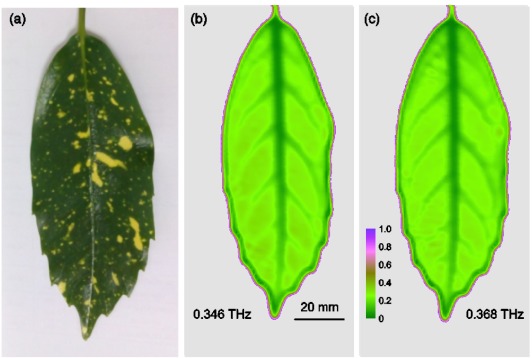The Suzhou Institute of Nano-tech and Nano-bionics (SINANO) CAS, Key Laboratory of Nanodevices and Applications Qin Hua team and National Key Laboratory of ASIC, Hebei Semiconductor Research Institute, successfully obtained high-sensitivity terahertz direct detector based on bilayer graphene field-effect transistor. Its sensitivity achieved the best level of similar graphene detectors, the results were recently published in the Carbon (Carbon 116, 760-765 (2017)).
We report a room-temperature, low-impedance and high-sensitivity terahertz direct detector based on bilayer graphene field-effect transistor (GFET). Epitaxially grown on silicon carbide, the bilayer graphene had an as-grown carrier mobility of 3000 cm2/Vs. The source/drain contacts were formed on the freshly cleaned graphene sheet to minimize the contact resistance and served also as terahertz antennas. The gate and the dielectric layer underneath with a length of 145 nm and a gap of 203 nm to the source/drain antennas were formed in a self-alignment process. Although the carrier mobility in the GFET was reduced to about 405 cm2/Vs, the high-quality ohmic contacts and the short graphene channel delivered an overall source-drain resistance less than 203 Ω. A voltage responsivity of 30 V/W and a noise-equivalent power of 51 pW/Hz1/2were estimated in direct detection at 0.33 THz. By using the GFET detector as a two-terminal detector, i.e., with the gate floating, a transmission-type terahertz imaging was demonstrated. Such a low-impedance GFET detector is ready to be matched to a commercial 50-Ω low-noise radio/microwave frequency amplifier allowing for high-speed homodyne detection and heterodyne detection in a quasi-optical configuration.

Demonstration of terahertz transmission imaging of a fresh leaf by operating the antenna-coupled GFET as a two-terminal detector, i.e., the gate is floating. (a) The optical image of the leaf. Terahertz images are obtained at (b) 0.346 THz and (c) 0.368 THz by raster scanning the leaf.
The research of the GFET terahertz detector has been supported by the National Natural Science Foundation of China (No. 61271157, 61401456, 61306006), the SINANO nano processing platform, the testing and analysis platform and the Institute of Superconductivity Electronics of Nanjing University.
Paper link: http://www.sciencedirect.com/science/article/pii/S0008622317301653
(Information source: Nanjing Branch of CAS)

